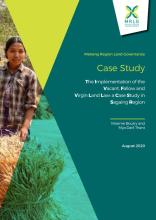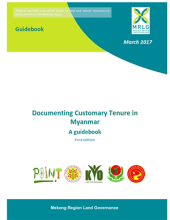Land Library
Welcome to the Land Portal Library. Explore our vast collection of open-access resources (over 74,000) including reports, journal articles, research papers, peer-reviewed publications, legal documents, videos and much more.
/ library resources
Showing items 1 through 9 of 16.This Case Study looks at the implementation of the Vacant, Fallow and Virgin Lands Management Law (VFV Law) in seven villages in Sagaing Region, to assess the practices on the ground and how the law impacts the land tenure security of smallholder farmers.
This guidebook provides conceptual, legal and practical tools and resources to help civil society organizations guide communities through the process of documenting customary tenure at the local level.
In Cambodia, the majority of the population is still composed of smallholder family farmers. 54% of the total labour force is employed in agriculture. They have access to 3.6 million ha of land, representing 19% of the country’s total land.
This country level analysis addresses land governance in Laos in two ways. First, it summarises what the existing body of knowledge tells us about power and configurations that shape access to and exclusion from land, particularly among smallholders, the rural poor, ethnic minorities and women.
Los autores nos introducen al estudio del sistema de responsabilidad patrimonial de la Administración Pública en el ordenamiento jurídico peruano, introducido por vez primera en la Ley 27444, del Procedimiento Administrativo General, norma que por primera vez regula los alcances sustantivos de di
This paper aim to analyze the role that such a concepts like family, inheritance and property played for developing modern Argentine society. Especially how some principles were broken on, while others have been kept on, as the different legal criteria suggests.
Este artículo presenta una reflexión sobre las causas de la concentración de la tierra en Colombia, y la importancia de la reforma agraria en su contribución al desarrollo en el contexto del actual Plan de Desarrollo “Prosperidad para Todos”.
--
A partir del análisis de la jurisprudencia de la Corte Suprema norteamericana y del Tribunal Constitucional peruano, así como de nuestro marco normativo, el autor analiza los diversos criterios para determinar cuando estamos frente un supuesto de expropiación indirecta, tales como a magnitud de l





